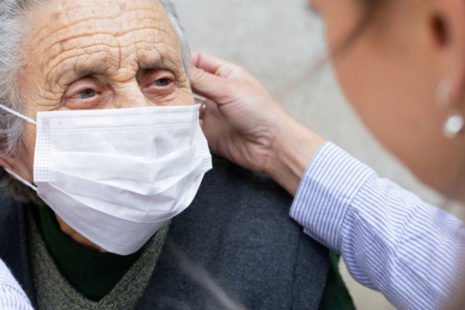In healthcare, hospice care plays a role in providing compassionate support to individuals facing terminal illness and end-of-life needs. Recognizing the signs that hospice care may be warranted is for ensuring timely and appropriate care for patients and their families.
Let’s explore the red flags that indicate hospice care may be necessary…
- Declining Health Status
- Persistent and uncontrolled pain or symptoms, despite ongoing medical treatment.
- Recurrent hospitalizations or emergency room visits for symptom management.
- Progressive weight loss, decreased appetite, or difficulty swallowing.
- Decline in functional status, such as difficulty walking, bathing, dressing, or performing activities of daily living.
- Prognosis of Six Months or Less
- Healthcare providers have determined that the patient’s prognosis is six months or less if the disease follows its natural course.
- Chronic illness or progressive condition has reached an advanced stage, with no further curative treatment options available.
- Increased Caregiver Burden
- Family caregivers experience physical, emotional, or financial strain in providing care for their loved ones.
- Caregiver burnout or exhaustion becomes evident, impacting their ability to meet the patient’s needs effectively.
- Palliative Care Needs
- Patient requires comprehensive symptom management and palliative care services to optimize comfort and quality of life.
- The focus of care shifts from curative treatment to comfort-oriented care, emphasizing pain and symptom management, psychosocial support, and spiritual care.
- Worsening Cognitive Function
- The patient experiences significant cognitive decline or dementia progression, leading to increased dependency and care needs.
- Behavioral symptoms such as agitation, aggression, or wandering pose safety risks and become challenging to manage at home.
- Frequent Hospitalizations or Rehabilitation
- Patient experiences frequent hospital admissions, transitions between healthcare settings, or prolonged stays in rehabilitation facilities.
- The burden of treatment outweighs the potential benefits, and the patient expresses a preference for comfort-focused care in familiar surroundings.
- End-of-Life Discussions
- Patient and family express a desire to shift focus from aggressive treatment to supportive and comfort-oriented care at the end of life.
- Advance care planning discussions have taken place, and patient preferences and goals of care align with hospice philosophy and principles.
Recognizing these red flags can help healthcare providers, patients, and families initiate timely discussions about the appropriateness of hospice care and facilitate smooth transitions to end-of-life services. Hospice care aims to provide holistic support, comfort, and dignity to patients and their loved ones during life’s final journey.
Stay tuned for more insights on hospice care, palliative services, and compassionate end-of-life support for individuals and families.







